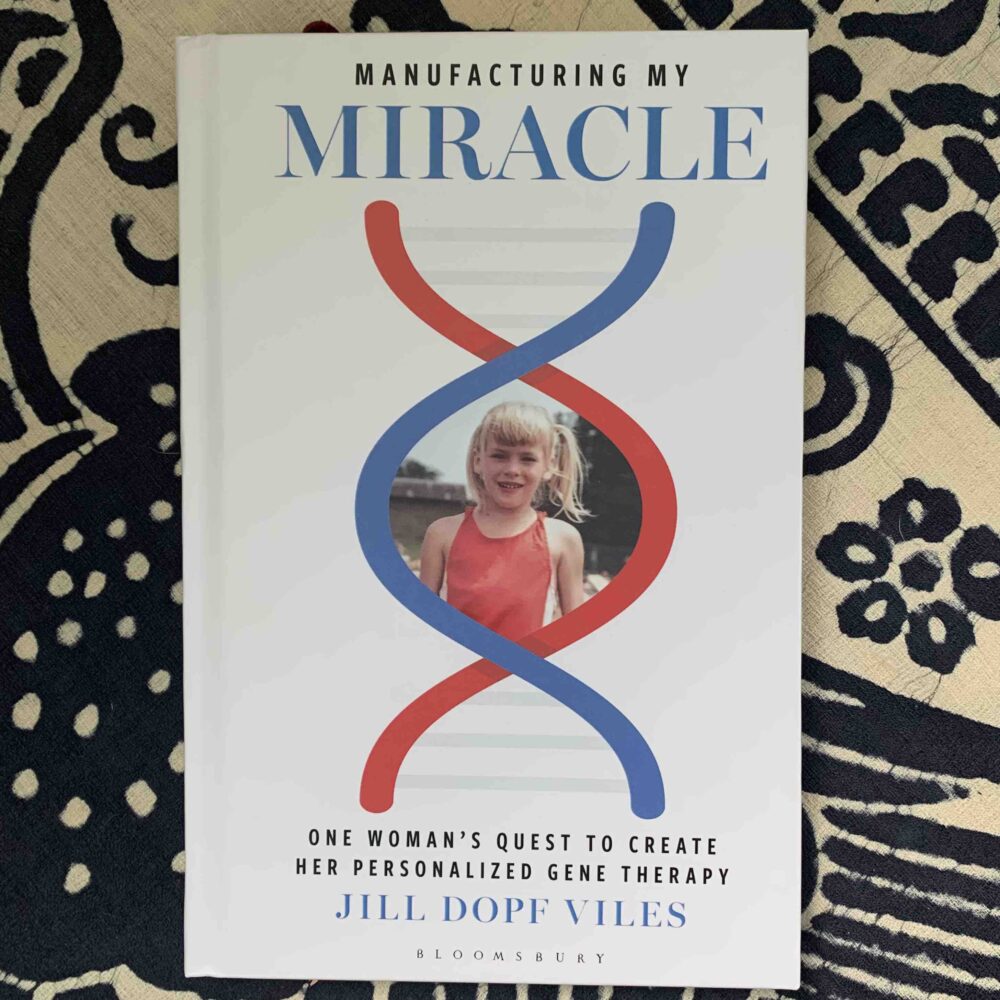
Jill Dopf Viles suspected a killer was hiding in her family’s genetic code. Symptoms popped up among her siblings, her father, her uncle, her grandmother, but, despite 15 annual visits to the Mayo Clinic, no clinician suggested anything more specific than muscular dystrophy.
Viles studied genetics in college and spent hours in the library, reading far afield from her class assignments. She correctly identified that her father’s serious heart ailment was related to his unusual gait and Popeye arms, a diagnosis that had been missed by his clinicians.
As she writes in her just-released book, Manufacturing My Miracle:
I could never again play the card of ignorance, and neither could my dad. Up until this point, I could juxtapose any number of reasons to dismiss what I’d uncovered in the university library—I was too young to know better than my doctors, I had no formal medical training, the Mayo Clinic had followed our family for years. Surely, they would have identified a cardiac flaw and thereafter, the Muscular Dystrophy Association’s Care Clinic—these physicians, nurses, and therapists focused exclusively on neuromuscular disorders. How could they possibly miss a diagnosis as obvious as Emery-Dreifuss muscular dystrophy when there were only nine subtypes of muscular dystrophy from which to select?
Viles took matters into her own hands. She organized underground genetic testing for herself and seven family members, mailing the vials of blood to a lab in Italy. Analysis confirmed that she and five family members lived with variants of the rare genetic disease that she herself had identified. She pushed ahead, making even more unusual observations, such as when she correctly connected 2009’s fastest woman in the world’s extraordinary musculature to her own lack of muscle (a story told by David Epstein on This American Life).
Jill Dopf Viles was a fearless, brilliant scientist (or, as she put it, a DIY scientist). I am very sorry to have to write that sentence in the past tense. She died on June 12, 2025, one month before the release of her heroic memoir, Manufacturing My Miracle: One Woman’s Quest to Create Her Personalized Gene Therapy. I was honored to have corresponded with her over the years and I thought of her as I devised the four archetypes of the patient-led revolution in my own book, Rebel Health. She demonstrated the strengths of each one:
Seeker: As a high school and college student Viles scoured the medical literature, learning as much as she could about genetics in order to solve her own health mysteries. In her book’s acknowledgements she thanks the librarians at the inter-library loan desk at Iowa State University: “I was told, at the time, I had ordered more articles than any student they’d ever worked with.” She never, ever gave up.
Networker: She connected with people who shared her genetic variants, both Emery-Dreifuss and partial lipodystrophy, whether they were in the U.S., Canada, Pakistan, or anywhere else on the globe. As she wrote, “Setting out to help another person was how I found the strength to continue, to find purpose in my life journey, even as my body slowly weakened year by year.”
Solver: Faced with mainstream health care’s failures to provide information and treatments, she took advantage of an FDA loophole to obtain the equipment she needed to draw her family members’ blood for genetic testing and then, later, to order the tools of gene therapy. She wrote: “My greatest obstacle was my resistance to pursue anything ethically murky. I was the type of person who returned to the store with an unpaid can of veggies or refused an extra dollar when offered change. Despite this inertia of honesty, I found the brave new world of genetic self-experimentation infused with a renegade spirit that was hard for me to deny.”
Champion: She aligned her mission with mainstream institutions, from clinicians and scientists at the Mayo Clinic, Drake University, Iowa State University, and Johns Hopkins University, to the writing instructors at the University of Iowa. She also found journalists like David Epstein who, as she put it, as the “first to give my story wings—no, make that rocket propulsion.”
In case it’s not yet clear, I loved Manufacturing My Miracle and highly recommend it both as a memoir and a guidebook for other health rebels. If you’d like to learn more about Jill Dopf Viles and her work, check out her blog, her TEDx talk, or this remembrance.
Leave a Reply